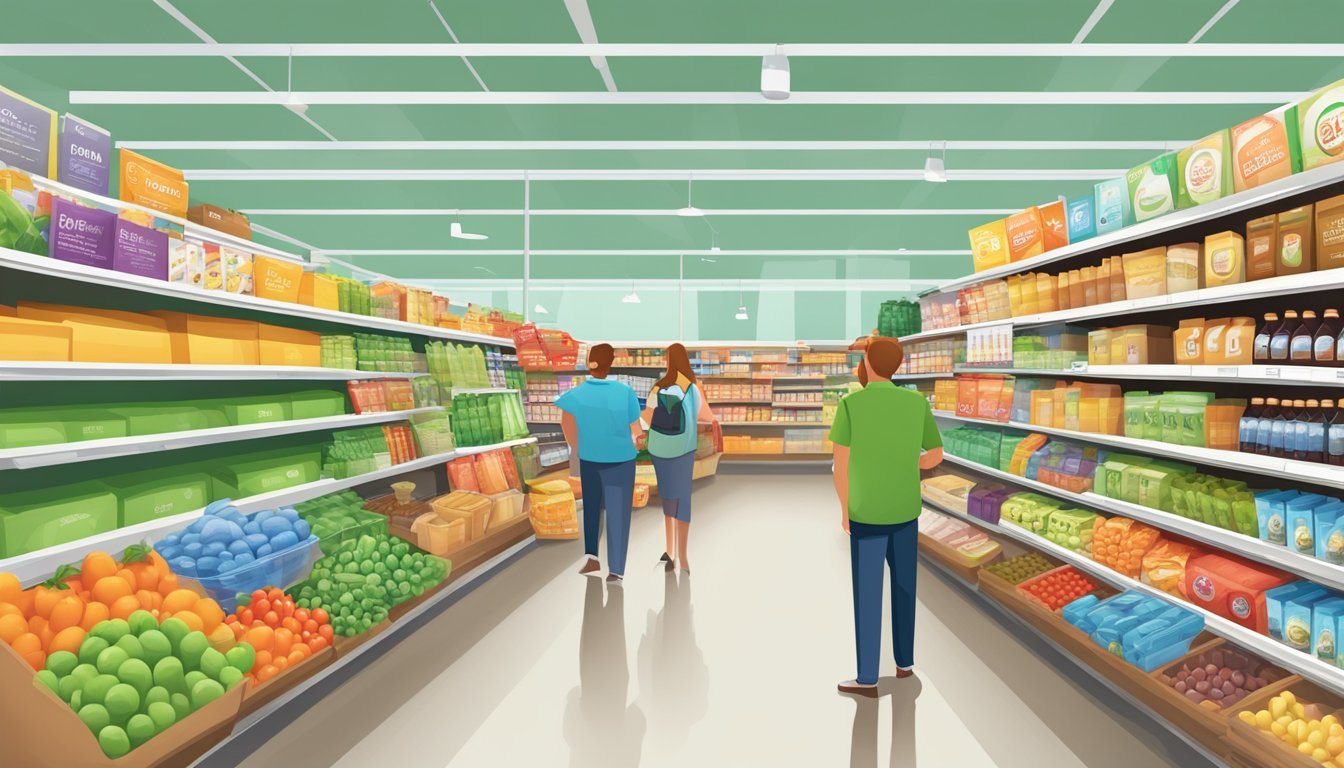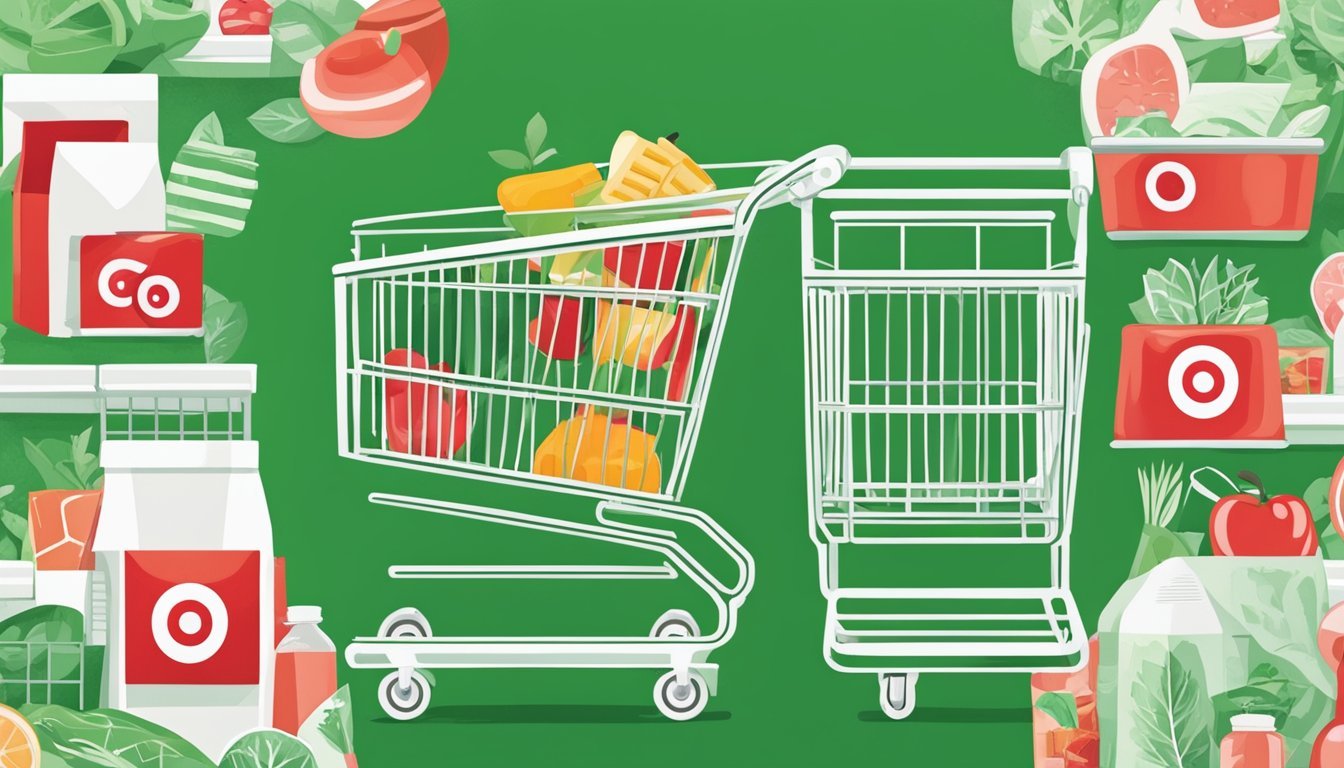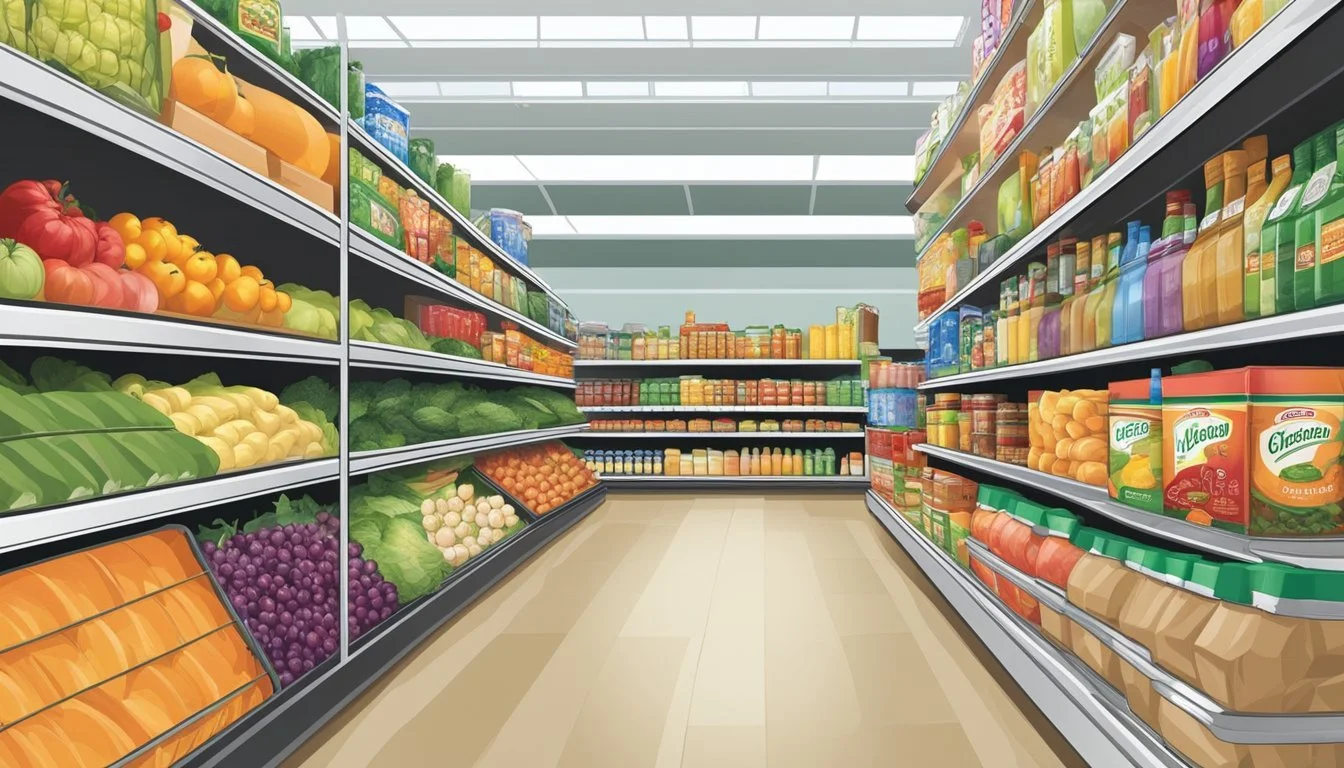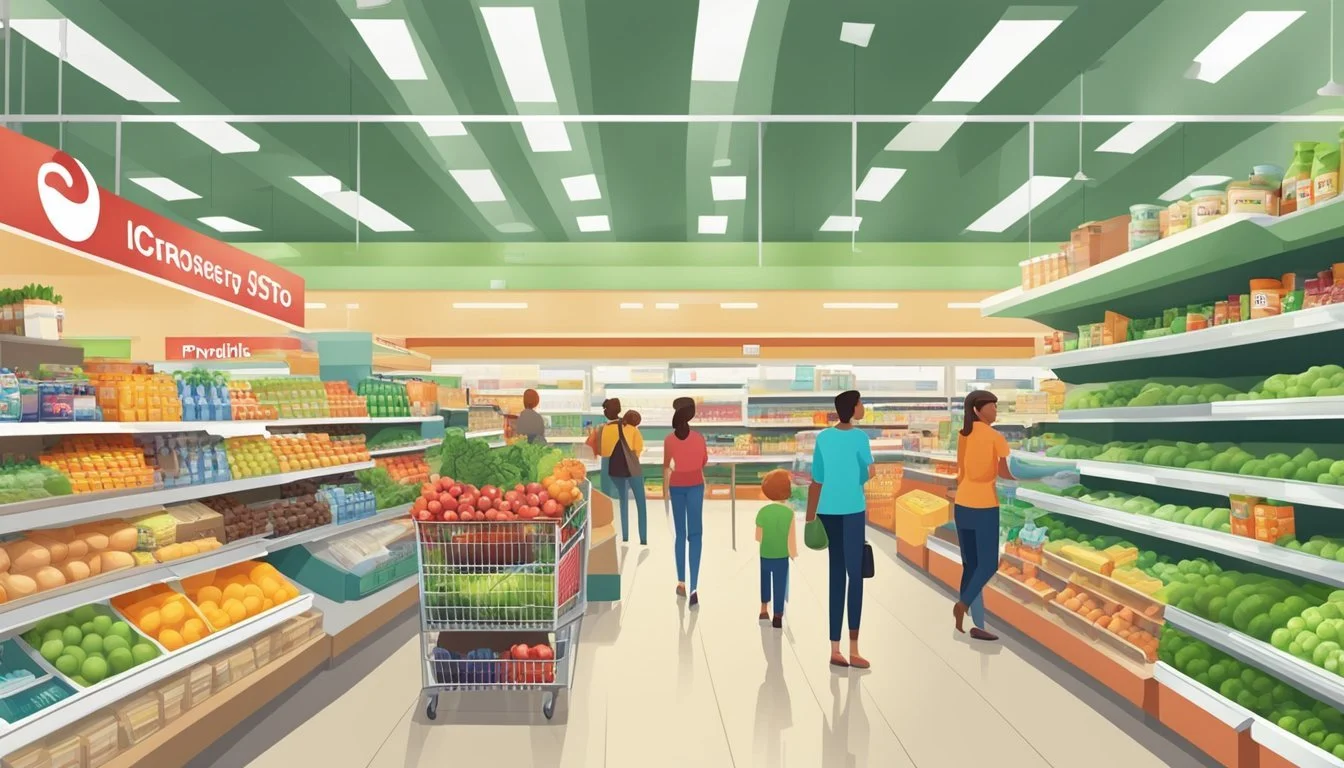Target vs Publix
A Comprehensive Comparison of Two Retail Giants
Grocery shopping is a weekly ritual for many households, and choosing the right store can significantly impact both your budget and shopping experience. Target and Publix are two popular options that offer distinct advantages to consumers.
Target comes out ahead in terms of overall affordability, with prices on average 30% lower than Publix for comparable items. This price difference is especially noticeable on everyday essentials like bread, rice, and popcorn. Target's Market Pantry brand often provides larger package sizes at lower costs compared to Publix's offerings.
While Publix may not win on price, it excels in other areas. The southern grocery chain is known for its high-quality fresh produce, excellent customer service, and clean, well-organized stores. Shoppers who prioritize these factors may find the extra cost at Publix worthwhile for their grocery needs.
Company Profiles
Target and Publix are major retailers in the United States, each with a unique history and business model. Both have grown from humble beginnings to become household names, though they've taken different paths to success.
History of Target
Target Corporation began in 1902 as Goodfellow Dry Goods in Minneapolis, Minnesota. The company rebranded as Target in 1962, launching its first discount store in Roseville, Minnesota.
Target quickly expanded across the country, focusing on offering affordable, stylish products. By the 1970s, it had become a nationwide chain.
In 2000, Target phased out its department store divisions to focus solely on its discount retail format. The company has since expanded into urban markets with smaller-format stores and enhanced its e-commerce capabilities.
Today, Target operates over 1,800 stores across the United States. It's known for its "Expect More. Pay Less." slogan and exclusive designer partnerships.
History of Publix
Publix Super Markets, Inc. was founded in 1930 by George W. Jenkins in Winter Haven, Florida. Jenkins opened the first Publix Food Store during the Great Depression, focusing on customer service and quality products.
The company grew steadily in Florida, introducing innovative features like air conditioning and automatic doors. In 1940, Jenkins opened the first supermarket-style Publix store.
Publix expanded beyond Florida in the 1990s, entering Georgia, South Carolina, and Alabama. The company is known for its employee ownership model, with staff members often referred to as "associates."
As of 2024, Publix operates over 1,200 stores across seven southeastern states. It remains privately held and is one of the largest employee-owned companies in America.
Store Presence and Locations
Target and Publix have distinct geographical footprints across the United States. Their store locations reflect different expansion strategies and regional focuses.
Regional Stores
Publix operates exclusively in the southeastern United States. The company has a strong presence in Florida, where it was founded in 1930. Publix stores can be found in seven states: Florida, Georgia, Alabama, South Carolina, Tennessee, North Carolina, and Virginia. Florida hosts the majority of Publix locations, with over 800 stores. Georgia follows with about 190 stores. Publix is known for its deep roots in these communities and tailors its offerings to regional preferences.
National Footprint
Target boasts a much broader national presence compared to Publix. With stores in all 50 states, Target reaches a wider customer base across America. The retailer began in Minnesota and has since expanded coast to coast. Target operates over 1,800 stores nationwide, with a mix of standard-format stores and smaller urban locations. California has the highest number of Target stores, followed by Texas and Florida. Target's widespread locations allow for greater brand recognition and accessibility for shoppers across the country.
Product Range and Quality
Target and Publix offer distinct shopping experiences with varied product selections and quality standards. Both stores cater to different customer needs through their grocery options and store brand offerings.
Grocery Options and Availability
Target provides a wide array of groceries, focusing on convenience and popular brands. Their food selection includes pantry staples, frozen items, and fresh produce. Target's grocery aisles feature a mix of national brands and their own Market Pantry line. The store's layout emphasizes quick shopping trips, with easy-to-navigate sections.
Publix, as a dedicated supermarket, offers a more extensive selection of groceries. Their stores boast larger produce sections with a variety of fresh fruits and vegetables. Publix is known for its well-stocked deli and bakery departments, providing ready-to-eat meals and freshly baked goods.
Store Brands
Target's primary store brand for groceries is Market Pantry. This line covers a broad range of products, from canned goods to snacks and dairy items. Market Pantry items are generally priced lower than national brands, offering budget-friendly options. Target also features the Archer Farms brand for premium and organic products.
Publix offers its own line of store-brand products under the Publix label. These items span various categories, including groceries, household goods, and health products. Publix store brands are known for their quality, often rivaling national brands in taste and performance. The supermarket chain also provides a Greenwise line for organic and natural products, catering to health-conscious shoppers.
Pricing Strategies
Target and Publix employ distinct pricing approaches to attract and retain customers. These strategies impact overall affordability and value across different product categories.
Everyday Value and Deals
Target focuses on competitive everyday low prices, especially for its private label brands like Market Pantry and Good & Gather. The retailer offers frequent promotions through its Circle rewards program, including percentage-off deals and gift card incentives on specific categories.
Publix takes a different approach, emphasizing quality and customer service alongside competitive pricing. The supermarket chain runs weekly BOGO (Buy One Get One) deals on popular items. Publix also offers digital coupons through its app and matches competitors' prices on identical products.
Both stores provide savings opportunities, but Target generally offers lower everyday prices across more categories.
Price Comparison across Categories
Target typically beats Publix on price for many grocery staples. A comparison of 19 common items showed Target's total coming to $32.48, while Publix rang up at $46.33 - a $13.85 difference.
Specific examples:
Bread: White loaf at Publix $1.89, Walmart $1.58 (Target likely similar)
Produce: Often more affordable at Target
Private label items: Target's Market Pantry usually cheaper than Publix equivalents
Publix tends to have higher prices on packaged goods and household items. However, the chain often offers competitive prices on meat and seafood, especially during sales.
For budget-conscious shoppers, Target generally provides better overall value across most grocery categories.
Customer Experience
Target and Publix both prioritize customer satisfaction, but they approach it differently. Their strategies for store design and customer service shape distinct shopping experiences for their customers.
Store Layout and Design
Target emphasizes a modern, streamlined aesthetic. Wide aisles and clear signage make navigation easy. The store layout often groups related items together, facilitating efficient shopping trips.
Publix focuses on a clean, well-organized environment. Their stores typically feature bright lighting and spacious produce sections. The deli and bakery areas are prominently placed, showcasing their fresh offerings.
Both chains maintain high cleanliness standards. Target's red and white color scheme creates a vibrant atmosphere. Publix opts for a more subdued palette, aiming for a comfortable, neighborly feel.
Customer Service and Satisfaction
Publix is renowned for its exceptional customer service. Employees are trained to be friendly and attentive. They often escort customers to find items and carry groceries to cars.
Target strives for efficient service. Self-checkout options are common, appealing to customers who prefer quick transactions. Staff members are generally helpful when approached.
Customer satisfaction surveys consistently rank Publix highly. They've earned top spots in industry studies for their shopping experience. Target receives good ratings but typically scores lower than Publix in customer service categories.
Both stores offer loyalty programs. Publix provides personalized coupons and savings through their app. Target's RedCard offers discounts and free shipping for online orders.
Comparative Analysis
Target and Publix occupy distinct positions in the grocery retail landscape. Their market strategies and consumer perceptions differ significantly, shaping their competitive approaches.
Market Positioning
Target positions itself as a one-stop shop, offering groceries alongside other retail categories. The company aims to attract customers seeking convenience and value. Target's grocery selection tends to be more limited than traditional supermarkets, focusing on popular brands and everyday essentials.
Publix, in contrast, is a dedicated grocery chain with a wider range of food products. The employee-owned company emphasizes high-quality fresh produce, meats, and baked goods. Publix stores often feature in-house delis and bakeries, catering to shoppers looking for specialized grocery items.
Both retailers face competition from Walmart, the largest grocery seller in the U.S. Walmart's aggressive pricing strategy puts pressure on Target and Publix to maintain competitive prices while differentiating their offerings.
Consumer Perceptions
Target is often perceived as a trendy, affordable option for groceries. Many consumers appreciate the store's clean, organized layout and the ability to combine grocery shopping with other purchases. However, some shoppers find Target's grocery selection limited compared to dedicated supermarkets.
Publix has built a reputation for excellent customer service and high-quality products. The chain consistently receives high ratings for its fresh produce and prepared foods. Consumers often praise Publix's friendly staff and clean stores.
Price-conscious shoppers may find better deals at Target or Walmart for packaged goods. Publix, while sometimes perceived as pricier, is valued for its product quality and shopping experience. Aldi and Whole Foods also factor into consumer decision-making, with Aldi appealing to budget shoppers and Whole Foods targeting health-conscious consumers.
Specialty Departments and Services
Target and Publix offer distinct specialty departments and services to enhance the shopping experience. Both chains provide deli and bakery options, as well as pharmacy services, but with notable differences in quality, selection, and approach.
Delis and Bakeries
Publix is renowned for its high-quality deli and bakery departments. The Publix deli offers a wide selection of freshly sliced meats and cheeses, as well as prepared foods like rotisserie chickens and custom-made sandwiches. Their bakery produces artisanal breads, elaborate cakes, and popular items like their signature key lime pie.
Target's deli and bakery offerings are more limited. Some larger SuperTarget locations feature basic deli counters with pre-sliced meats and cheeses. Their bakery section typically consists of pre-packaged baked goods rather than freshly made items.
Pharmacies and Clinics
Both Target and Publix operate in-store pharmacies. Publix pharmacies are known for excellent customer service and often offer free medications for certain prescriptions. They provide immunizations, medication counseling, and specialized services for patients with chronic conditions.
Target pharmacies, now operated by CVS Health, offer a range of services including prescription refills, immunizations, and health screenings. Many Target stores also house MinuteClinics, providing convenient walk-in medical care for minor illnesses and injuries.
Target's integration with CVS allows customers to access a wider network of pharmacy services and benefits. Publix pharmacies, while more localized, often receive high marks for personalized care and attention to customer needs.
Corporate Social Responsibility
Both Target and Publix demonstrate commitment to corporate social responsibility, but with different areas of focus.
Publix places a strong emphasis on hunger relief and environmental sustainability. The company partners with food banks to address food insecurity in its communities. Publix also prioritizes reducing waste and improving environmental practices in its operations.
Target's corporate responsibility efforts center on education, workforce development, and sustainability. The company invests in programs to support local schools and provide job training opportunities.
Key CSR initiatives:
Publix:
Food donation programs
Sustainable store practices
Community volunteerism
Target:
Education grants
Diverse supplier programs
Clean energy investments
Publix earned recognition on Forbes' inaugural Halo 100 list, ranking 4th overall and 1st among grocery retailers for customer service and charitable efforts. This speaks to the effectiveness of their community-focused initiatives.
Both companies publish corporate social responsibility reports detailing their ethical practices and sustainability goals. These reports provide transparency into their efforts to operate responsibly and give back to communities.
While their specific programs differ, Target and Publix both demonstrate a commitment to operating ethically and supporting the communities they serve through various corporate social responsibility initiatives.
Conclusion and Recommendations
Target and Publix both offer distinct advantages for grocery shoppers. Target provides lower prices on many items, potentially saving customers up to 26% compared to Publix.
Publix excels in customer service and product quality, appealing to shoppers who prioritize these factors. Its employee-owned structure contributes to a positive shopping experience.
For budget-conscious consumers, Target is the recommended choice. Its competitive pricing on staples like bread and wider selection of household goods make it a versatile option.
Those valuing premium produce, meats, and personalized service may prefer Publix. Its limited product selection helps maintain quality while keeping prices reasonable.
Tips for shoppers:
Compare prices on frequently purchased items at both stores
Take advantage of sales and promotions
Consider shopping at Target for non-perishables and Publix for fresh goods
Use store loyalty programs to maximize savings
Plan meals around weekly specials at each store
Ultimately, the best choice depends on individual priorities and shopping habits. Alternating between stores can provide a balance of savings and quality.










